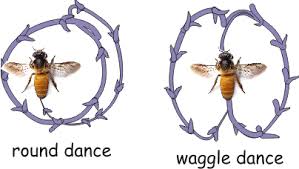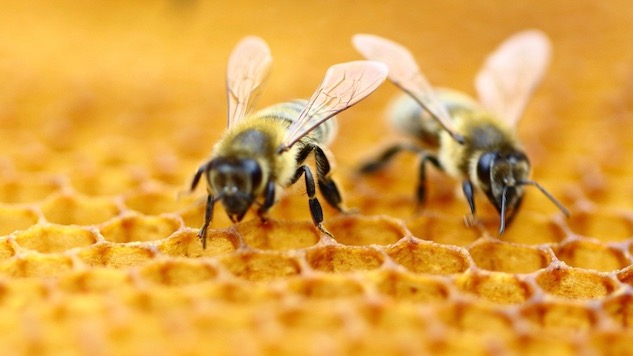It’s not only humans who derive symbolic meaning from dance. Honeybees use dance to tell each other about flowers and nectar and the best places to find them. In an extraordinary ritual known as the “waggle dance”, a scout bee finds a rich flower patch, sips some nectar, and then flies home. She (and it’s always a she) lights on the vertical surface of the honeycomb, near the nest entrance where she will have an audience, and dances a repeated figure eight. The way she waggles her body announces the direction of the food, its distance from the hive, and its location based on its angle with relation to the position of the sun. Further details are conveyed by timed buzzing and the secretion of certain odors.

Bees not only divide labor. Their roles change as they age. As a young adult, a worker bee is a chambermaid, cleaning the cells where the food is stored and where the queen lays her eggs. Then she becomes a nursemaid, caring for young larvae, and then as her wax secreting glands mature, she begins a construction career, building the cells of the honeycomb. She does guard duty at the hive briefly, then becomes a forager who brings home nectar and pollen and does her elaborate and symbolically informative dance. The scientist Karl von Frisch performed experiments in 1947 that showed the purposes and functions of the dance, communicating vital information about the distance and direction from the hive to the food source. In his essay, E.O. Wilson quotes von Frisch as saying that to scientists, “The life of the bee is like a magic well. The more you draw from it, the more there is to draw.”
The BeeSpace Project of the University of Illinois has been analyzing analyze the combined genetic and environmental contributions to social behavior. This biology research is generating a unique database of gene expression for all social behavior. These experiments use sequenced genome and state of the art statistics. Lest anyone doubt the versatility of bees, they have been trained to abstain from flowers and sniff out minute traces of explosives that could indicate the presence of truck bombs and land mines.
So work the honeybees, Creatures that by a rule of nature teach The act of order to a peopled kingdom. William Shakespeare, Henry V

